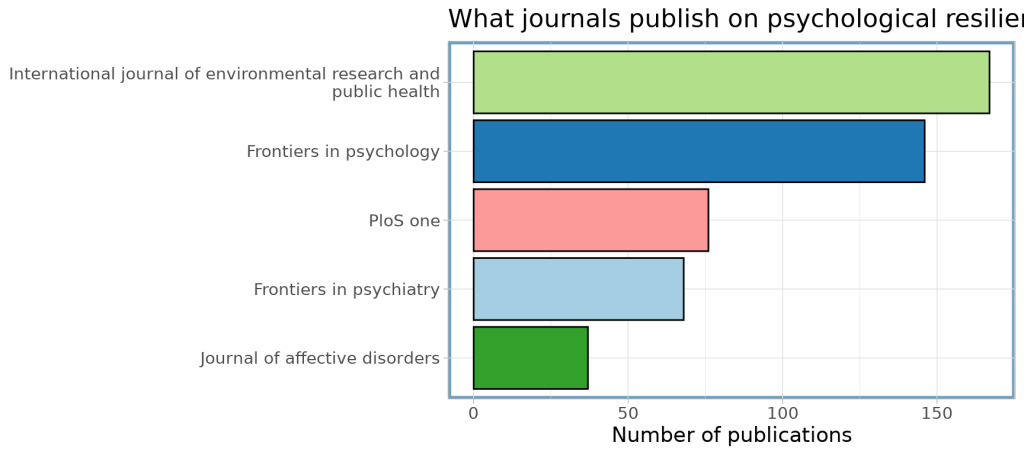
The Role of Resilience in Psychopathology
Many public health organizations have a specific focus on resilience. For example, the Philadelphia Department of Behavioral Health (DBHIDS, 2011) specifically promotes resilience by saying that it is, “a protective process which enables individuals to reach good outcomes even though they have endured significant adversities. Resilience is a common phenomenon arising from ordinary human adaptation and strength. It is a dynamic process that can change across time, developmental stage, and life domain.” Other definitions emphasize the importance of good adaptation under extenuating circumstances.
This blog will discuss several components of resilience and how they aid understanding of how psychopathology develops. Resilience is useful in determining those who are at risk for developing diseases and s methods for fostering positive development under pressure.

Assumptions about Resilience
The study of resilience in psychopathology needs two assumptions
- That the individual is currently functioning at a “normal” or adaptive level of development generally free of any type of significant pathology
- That developmental conditions put the individual at risk for developing some type of disorder. That is, although conditions were favorable for poor outcomes, these outcomes did not emerge as expected.
This focus has big implications for treatment and early intervention. It means we can identify the things that can prevent kids from developing negatively, even if they have pre-existing factors that are bad. And this will lead to better outcomes.
The study of resilience also includes measuring various internal and external factors that are contributing either positively or negatively to the outcome(s) of interest. Masten and Reed (2005) propose two models for the study of resilience– variable-centered and person-centered models.
Variable-Centered Models
Variable-centered models attempt to identify the types and processes by which risk and protective factors contributed to development. A risk factor is a variable that predicts poorer outcomes (such as a low SES). An asset is a factor that predicts positive outcomes (e.g. better medical care). Protective factors are the qualities, persons, context that predict better outcomes under adverse conditions (e.g. positive family dynamic, Masten and Reed, 2005).
In a variable-centered model, the risks, assets, and protective factors can contribute to development in a number of ways. First, they can operate directly in an additive manner. Risk or assets can accumulate. The number of risks or assets is a predictor of either good or poor functioning (Masten and Reed, 2005).
Second, these variables might make it more or less likely that something bad will happen. Things like these can either make you more vulnerable to risk, or they can help protect you and help buffer the full impact of the risk. An example of this could include having a good sense of humor or involving teachers at school.
Third, these factors could operate in indirect ways, either through a mediated relationship (by which certain factors help to give rise to others; e.g. positive home environment gives rise to a positive self-image, which predicts better outcomes under duress) or through a total preventative effect (good prenatal care prevents low-birth-weight and all subsequent associated difficulties.)
Variable-centered models attempt to establish causal pathways to find appropriate targets for intervention.
Person-Centered Models

Person-centered models explore the critical differences between individuals with adaptive versus less adaptive functioning. By comparing psychopathology and how those who have experienced certain risk factors adapted, we can find out why psychopathology did or did not emerge.
The study of resilience thus far has consistently pointed to a “shortlist” of factors that contribute to positive development (Masten, 2004) These factors include those within the individual (e.g. positive outlook, faith, good cognitive abilities, etc.), within the family (e.g. positive adult relationships, authoritative parenting, good SES), and within the community (e.g. good schools, good public safety, good social services, etc.).
In order to promote resilience, interventions can be focused on reducing the number of risk factors in the individual’s context, increasing the quality and quantity of assets, and improving the processes by which individuals can tap into the natural human adaptation system.
Conclusion

The studies on resilience are extremely helpful and promising, as they provide a number of different intervention points and intervention methods that can be used to prevent psychopathology from emerging and provide means to change factors that contribute to the perpetuation of symptoms.
The concept of resilience is not only applicable to those who have experienced trauma. It’s also appealing to social service workers, especially those who deal with situations with a lot of risk factors. Resilience-focused methods are critical for adopting a lifespan perspective on psychology treatment.
Read more at the link below.
Can’t access this article? Don’t forget to check out our types on how to get the full text of just about anything..



